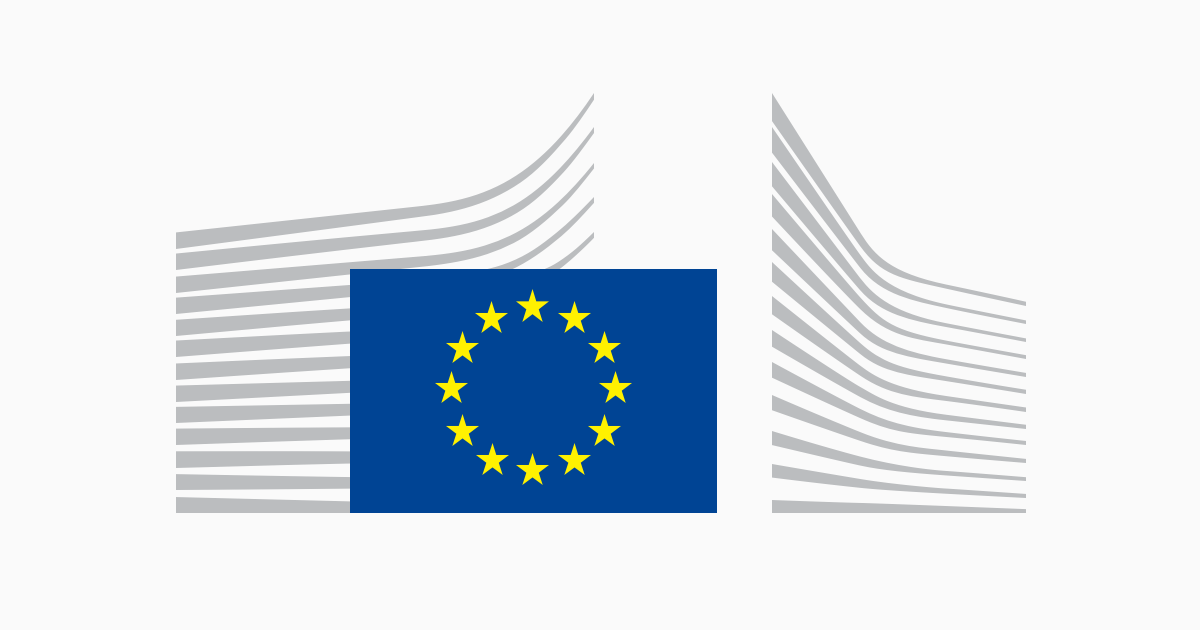What is the Single Resolution Mechanism(SRM) regulation?
The EU responded to the 2008 Global Financial Crisis by bolstering its financial stability framework, specifically through the Single Resolution Mechanism (SRM) and Single Resolution Fund (SRF).

Grand “Answer”:
The Single Resolution Mechanism (SRM) regulation is a system established by the European Union (EU) for the orderly resolution of failing banks without recourse to taxpayers' money. It's a part of the EU's banking union strategy to ensure financial stability across member states. The SRM works alongside the Single Supervisory Mechanism (SSM), another key pillar of the banking union, which supervises the financial health of banks. The implementation of the SRM regulation serves the purpose of averting and handling potential banking crises with a coordinated and efficient approach. This, in turn, upholds the confidence of depositors and investors in the European banking system by ensuring its stability and reliability.
Source
[1]

[2]
Unravelling the Single Resolution Mechanism (SRM) Regulation
The Global Financial Crisis (GFC) of 2008, often referred to as the worst financial crisis since the Great Depression of the 1930s, unleashed significant economic disruption globally. Its genesis in the United States, stemming from a cascade of subprime mortgage defaults due to imprudent lending practices and overvalued housing markets, soon spiralled into a worldwide economic downturn. Banks, financial institutions, and economies worldwide found themselves mired in a vortex of shrinking asset values, escalating defaults, and constricting credit availability.
Recognizing the catastrophic impact of such financial crises and the interlinkages of global economies, the EU swiftly moved towards bolstering its financial regulatory infrastructure. Specifically, two EU regulations were formulated as a response: Regulation (EU) No 806/2014 and Regulation (EU) 2019/877. These structures fortified the Single Resolution Mechanism (SRM) and integrated particular modifications into the initial regulation. The ensuing sections offer a deep dive into these regulatory structures, their functioning, and their implications for EU's financial stability.
The Single Resolution Mechanism (SRM) is the second pillar of the EU's banking union, created under Regulation (EU) No 806/2014. Within the SRM, there exists the Single Resolution Board (SRB) operating at the European Union level, alongside the National Resolution Authorities (NRAs) functioning at the national level. The SRB is a fully independent EU agency responsible for ensuring the orderly resolution of failing banks, safeguarding taxpayers from bearing the brunt of banking failures, and maintaining financial stability.
The SRM aims to maintain the critical functions of distressed banks, minimize the cost of bank failures, and ensure the continuity of banking services, all while safeguarding public funds. This two-layered structure provides a harmonized resolution approach across the EU, ensuring consistency in the application of resolution tools and powers.
The crucial components of the SRM are as follows:
- Resolution: The Bank Recovery and Resolution Directive (BRRD) provides a suite of tools and powers for the SRB and NRAs. The available resolution mechanisms encompass the divestment of business, establishment of a bridge institution, asset segregation, and the utilization of bail-in procedures. The overall aim is to maintain the continuity of vital functions and reduce the risk of instability in the financial system and the wider economy.
- Resolution Process: A failing bank or one that is likely to fail triggers the resolution process. A resolution scheme is created, providing a detailed plan to manage the crisis effectively. The plan usually involves employing one or multiple resolution tools, adjusting the bank's capital framework, and implementing measures to guarantee the uninterrupted provision of essential services. The process is swift and typically executed over a weekend to limit market disruption.

Dissecting the Single Resolution Fund (SRF): The Protective Financial Buffer
At the heart of the EU's financial stability framework lies the Single Resolution Fund (SRF), which is an essential component of the SRM. Under the supervision of the SRB, the Single Resolution Fund (SRF) gathers contributions from credit institutions and specific investment firms operating within the banking union. The objective is to secure ample funding for the resolution of distressed banks, thereby diminishing the risk of a contagion effect that might pose a potential threat to the stability of the financial system.
Operational since 2016, the SRF ensures that the financial industry, rather than taxpayers, bears the cost of banking crises. Its role in absorbing losses and providing necessary liquidity during the resolution process serves as a bulwark against systemic risk. With a target level of at least 1% of covered deposits by end of 2023, the SRF represents a substantial commitment to safeguarding the EU's financial stability.
The SRM and SRF within the EU's Banking Union Framework
Together with the Single Supervisory Mechanism (SSM), the SRM and the SRF form the foundation of the EU's banking union. The banking union represents a significant step towards a more integrated financial framework in the EU, aimed at maintaining financial stability in the Euro area by unifying banking supervision, resolution, and deposit insurance.
The SRM, acting as the resolution authority, takes center stage when a bank fails or is likely to fail. It prepares resolution plans and, if necessary, implements these plans using resolution tools and the resources of the SRF. The SRF, in turn, serves as a financial safety net, providing the necessary funds to facilitate the resolution process. It protects depositors and critical banking services, mitigating the need for public bailouts.
Alignment with Global Standards: Regulation (EU) 2019/877
Regulation (EU) 2019/877, which came into effect on 20 May 2019, significantly amended Regulation (EU) No 806/2014. The amendments aimed to ensure that the EU's banking resolution framework is fully aligned with the global standards set by the Financial Stability Board (FSB), especially regarding the bank's total loss-absorbing capacity (TLAC).
In line with the FSB's TLAC standards, EU banks must hold a sufficient amount of capital and other loss-absorbing liabilities. This reduces the potential systemic and economic impact of a bank failure, mitigates the reliance on taxpayer-funded bailouts, and enhances the resilience of the EU's banking sector.
Impact of the Regulations: A Fundamental Shift in EU's Financial Stability Approach
The enactment of Regulation (EU) No 806/2014 and Regulation (EU) 2019/877 signified a shift in the EU's approach towards bank resolution. By enabling early intervention and proactive management of failing banks, these regulations helped minimize the potential for a financial crisis and the need for public funds in bank rescues.
The EU's framework for financial stability has undergone significant changes due to the influence of these regulations. By setting up a centralized resolution authority (SRB) and a resolution fund (SRF), the EU now has a comprehensive set of tools to manage banking crises. By making shareholders and creditors bear the cost of bank failures, the regulations reduce the risk of moral hazard and strengthen market discipline.
Single Resolution Board (SRB): Ensuring Orderly Bank Resolution
The SRB, established by Regulation (EU) No 806/2014, is a pivotal part of the EU's banking union. As the central resolution authority, it oversees the resolution of significant and cross-border banks and certain large investment firms in the banking union.
The SRB's key responsibilities include:
- Role: The SRB's primary role is to ensure the orderly resolution of failing banks to protect taxpayers and the real economy.
- Decision-Making Process: The SRB operates as a central decision-making body. Its Executive Session, consisting of a Chair, a Vice-Chair, four permanent members, and representatives of the Commission and the ECB, takes resolution decisions.
- Responsibilities: The SRB develops resolution plans for banks under its remit, sets the minimum requirement for own funds and eligible liabilities (MREL), carries out resolution actions, and manages the SRF.
Role of SRB in Resolution Planning
One of the SRB's core responsibilities is resolution planning. It involves developing a strategy for resolving a failing bank, ensuring the continuity of its critical functions, protecting public funds, and minimizing disruptions to the financial system.
The resolution planning process comprises several key steps:
- Understanding the bank's business model, structure, risk profile, and systemic importance
- Identifying potential impediments to resolution and measures to remove such impediments
- Assessing the feasibility and credibility of resolution strategies
- Setting MREL at an appropriate level
- Maintaining a resolution planning dialogue with banks
Single Resolution Mechanism: Ongoing Challenges and Future Considerations
While the establishment of the SRM, SRB, and SRF has undoubtedly strengthened the EU's financial stability framework, ongoing challenges must be addressed. These include:
- Harmonization of National Insolvency Laws: There are notable discrepancies in national insolvency laws across EU member states, leading to inconsistent outcomes in bank resolution. A standardized approach may result in resolution processes that are both more foreseeable and streamlined.
- Consistency in Bank Liquidation and Resolution: Currently, there can be substantial variations in how bank liquidation and resolution processes are carried out across different member states. This inconsistency could potentially undermine the credibility and effectiveness of the SRM.
- Adaptation to Changes: The financial landscape is continuously evolving, and the resolution framework must adapt accordingly. Regular updates to the framework are essential to reflect changes in the financial landscape, international standards, and best practices.
The EU's regulatory response to the financial crisis, as embodied by the SRM, SRB, and SRF, represents a paradigm shift in the management of financial stability. However, the journey towards a truly robust and resilient financial system is ongoing, and the EU must remain vigilant and proactive in adapting its regulatory framework to suit the evolving global financial landscape.
This journey will necessitate ongoing evaluation of the SRM, SRB, and SRF's effectiveness and the introduction of adjustments and enhancements to ensure these mechanisms continue to serve their intended purpose. As the EU continues to bolster its financial stability framework, its experience will offer valuable lessons for other regions seeking to enhance their own financial resilience. The EU's commitment to financial stability, as shown through its comprehensive regulatory reforms, is a promising sign for its capacity to weather future financial storms.
Grand Answer: Your AI Partner
Designed to support compliance officers, legal counsels, and other professionals responsible for adhering to regulatory standards, Grand Answer aims to facilitate an efficient and straightforward compliance process.
Reduce your
compliance risks


